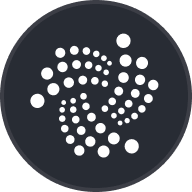ISO 20022: The Future of Global Payments and the Rise of Compliant Cryptocurrencies
Understanding ISO 20022 and Its Role in Modern Finance
ISO 20022 is a global financial messaging standard designed to revolutionize payment systems by enhancing interoperability, efficiency, and transparency. As the financial world transitions to this standard, it promises to streamline cross-border transactions, reduce costs, and improve fraud prevention. By 2025, ISO 20022 is expected to become the dominant standard for financial messaging, with institutions like SWIFT and the U.S. Federal Reserve actively adopting it.
Key Benefits of ISO 20022
ISO 20022 offers several advantages for global financial systems:
Improved Interoperability: The standard enables seamless communication between different financial institutions and systems, reducing friction in cross-border payments.
Enhanced Efficiency: Faster processing times and reduced operational costs make ISO 20022 a game-changer for global transactions.
Greater Transparency: Detailed data structures improve visibility into transactions, aiding compliance with anti-money laundering (AML) and other regulatory requirements.
Reduced Fraud Risk: Enhanced data formats and validation mechanisms minimize vulnerabilities in payment systems.
XRP and XLM: Leading ISO 20022-Compliant Cryptocurrencies
Two cryptocurrencies stand out in the ISO 20022 ecosystem: XRP (Ripple) and XLM (Stellar). Both are designed to facilitate efficient cross-border payments and have gained significant traction among financial institutions.
XRP: A Pioneer in Cross-Border Payments
XRP has established itself as a preferred solution for banks and payment providers, particularly in Asia. With over 300 financial partners globally, XRP leverages ISO 20022 compliance to offer:
Faster Transactions: XRP’s blockchain technology enables near-instant settlement of cross-border payments.
Cost Efficiency: Lower transaction fees make it an attractive option for financial institutions.
Global Reach: XRP’s widespread adoption positions it as a leader in the ISO 20022 ecosystem.
XLM: Championing Financial Inclusion
Stellar’s XLM focuses on financial inclusion, aiming to provide affordable cross-border payment solutions for underserved communities. Key features include:
Accessibility: XLM’s low-cost transactions make it ideal for micro-payments and remittances.
Interoperability: Stellar’s platform integrates seamlessly with traditional financial systems.
Focus on Inclusion: XLM’s mission aligns with ISO 20022’s goals of improving access to financial services.
Other ISO 20022-Compliant Cryptocurrencies
Beyond XRP and XLM, several other cryptocurrencies are ISO 20022-compliant, each offering unique use cases and technological innovations:
XDC: Focused on trade finance and enterprise solutions.
Algorand (ALGO): Known for its scalability and energy-efficient blockchain.
Hedera (HBAR): Offers high-speed transactions and enterprise-grade security.
IOTA: Specializes in IoT-based micropayments.
Quant (QNT): Facilitates interoperability between blockchains.
Cardano (ADA): Emphasizes sustainability and academic rigor in blockchain development.
The Impact of ISO 20022 on Cross-Border Payments
ISO 20022 is set to transform cross-border payments by addressing long-standing challenges such as high costs, slow processing times, and lack of transparency. The G20’s roadmap for improving cross-border payments aligns closely with ISO 20022’s objectives, emphasizing:
Cost Reduction: Lower fees for international transactions.
Speed: Faster settlement times.
Transparency: Enhanced visibility into payment flows.
Access: Improved financial inclusion for underserved communities.
Blockchain and Distributed Ledger Technologies (DLTs)
Blockchain and DLTs play a crucial role in achieving ISO 20022’s goals. By reducing intermediary costs and improving efficiency, these technologies enable:
Direct Transactions: Eliminating the need for multiple intermediaries.
Enhanced Security: Immutable ledgers reduce fraud risks.
Scalability: Blockchain networks can handle high transaction volumes.
Institutional Adoption of ISO 20022
Major financial institutions are actively transitioning to ISO 20022, signaling widespread adoption of the standard. Key developments include:
SWIFT’s Transition: SWIFT is migrating its messaging system to ISO 20022, ensuring global compatibility.
U.S. Federal Reserve: The Federal Reserve’s adoption of ISO 20022 underscores its importance for domestic and international payments.
Global Banks: Many banks are integrating ISO 20022-compliant systems to stay competitive in the evolving financial landscape.
Emerging Players in the ISO 20022 Ecosystem
New entrants like Remittix are making waves in the ISO 20022 space. Remittix introduces a crypto-to-fiat payment system that bypasses traditional banking systems, offering:
Lower Fees: Reduced costs for international transactions.
Faster Clearances: Near-instant settlement times.
Regulatory Flexibility: Simplified compliance processes.
Regulatory Compliance and Risk Management
ISO 20022 adoption requires adherence to global standards like AML and GDPR. Financial institutions must prioritize:
Data Security: Protecting sensitive transaction data.
Fraud Prevention: Implementing robust validation mechanisms.
Financial Inclusion: Ensuring access for underserved communities.
The Road Ahead: ISO 20022 and the Future of Finance
The transition to ISO 20022 by 2025 marks a pivotal moment for global finance. As compliant cryptocurrencies gain traction, they are poised to play a central role in modernizing payment systems. Key trends to watch include:
Broader Adoption: Increased use of ISO 20022-compliant cryptocurrencies by financial institutions.
Technological Innovation: Advancements in blockchain and DLTs to support ISO 20022 goals.
Financial Inclusion: Expanding access to affordable payment solutions for underserved populations.
ISO 20022 represents more than just a technical upgrade—it’s a transformative force reshaping the future of global payments.
© 2025 OKX. Denne artikkelen kan reproduseres eller distribueres i sin helhet, eller utdrag på 100 ord eller mindre av denne artikkelen kan brukes, forutsatt at slik bruk er ikke-kommersiell. Enhver reproduksjon eller distribusjon av hele artikkelen må også på en tydelig måte vise: «Denne artikkelen er © 2025 OKX og brukes med tillatelse.» Tillatte utdrag må henvise til navnet på artikkelen og inkludere tilskrivelse, for eksempel «Artikkelnavn, [forfatternavn hvis aktuelt], © 2025 OKX.» Noe innhold kan være generert eller støttet av verktøy for kunstig intelligens (AI/KI). Ingen derivatverk eller annen bruk av denne artikkelen er tillatt.



